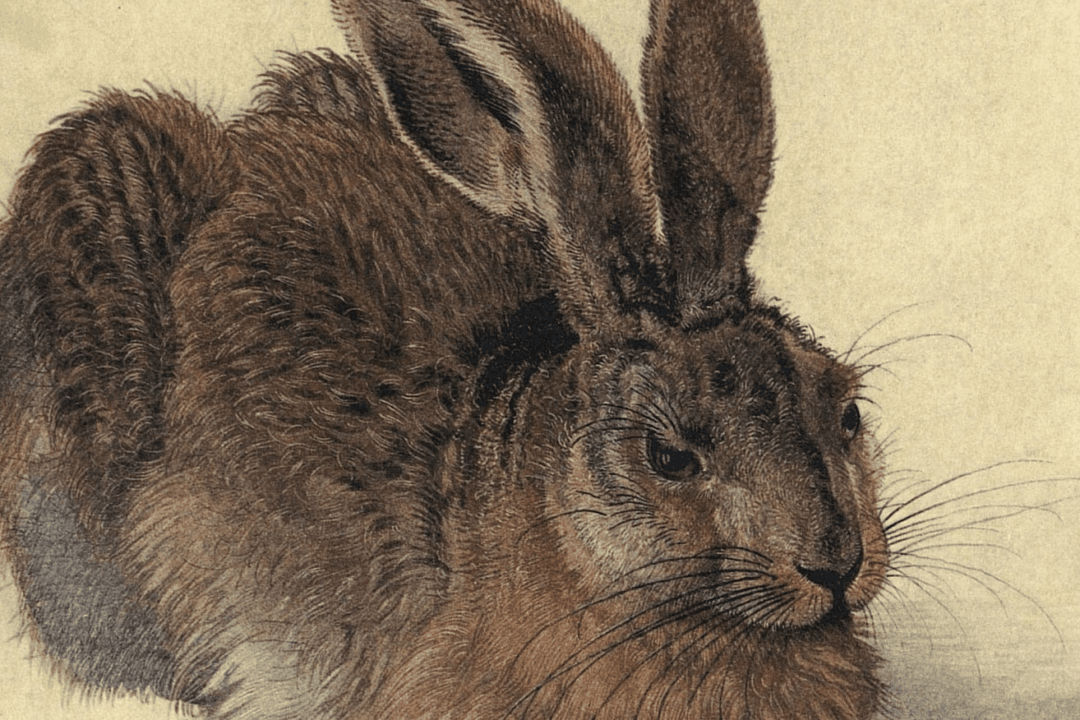This is no cuddly cottontail. Here we see a jackrabbit that Alice in Wonderland would have called a March Hare, and what Aesop quite accurately described in “The Tortoise and the Hare.”
Albrecht Dürer (1471–1528) would have known and observed this rabbit species in the meadows of his beloved Germany. The hare of his memory was wild, strong, and fast. Its long, large ears captured every sound, especially of danger on the open ground where the creature made its home. Such animals would have been difficult to capture much less paint in the wild, as hares could flee from sight in the blink of an eye.






